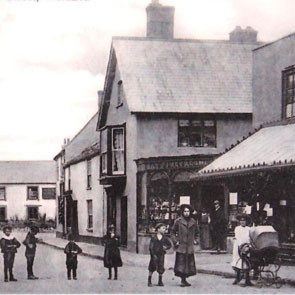Watchet's Heritage - Esplanade Lane Hairdressers

This purpose-built shop probably made its first appearance sometime in the mid-nineteenth century and is virtually unchanged since those early days. It has had many different occupiers, including greengrocers and bakers, but the earliest we know anything about is its occupation by the Date family.
It was run successfully as a tearoom at the time when James Date was recording the dramatic changes in the town’s fortunes in the 1860s and 1870s. Following the acquisition of the Pleasure Ground in 1861 and the subsequent building of the tearooms known as the Beehive, the family were running this successful offshoot of their Swain Street business.
Kellys and other directories mention the Pleasure Grounds from the 1870s and it seems likely that the ‘Beehive’ would have continued in use until an act of arson during the Edwardian period saw it burnt down. The Pleasure Ground with the Beehive Tearoom regularly appears in maps and guides and directories until the First World War. There is no indication of a structure after this date so we must assume it was not rebuilt. The Beehive has a strong connection with the Date family and it appears in many photographs by James Date.
Mrs Elizabeth Date with her sister ran the refreshment rooms in Swain Street which were sited to the left of the entrance to Esplanade Lane. The 1901 census shows that Elizabeth Date, aged 56, was the wife of John Date, aged 54, who was a coal and corn merchant in Swain Street. Their daughter Lydia, aged 24, was the ‘refreshment room assistant’ at this time but the directory of 1906 shows that Lydia had then taken over from her mother.
For further information about the town as a whole,
please visit the home page or click
Here
This page is provided by Watchet Conservation Society with the help of Watchet Chamber of Trade
and with funding from Somerset West & Taunton Council's High Street Emergency Fund.
Text and history provided by Nick Cotton
